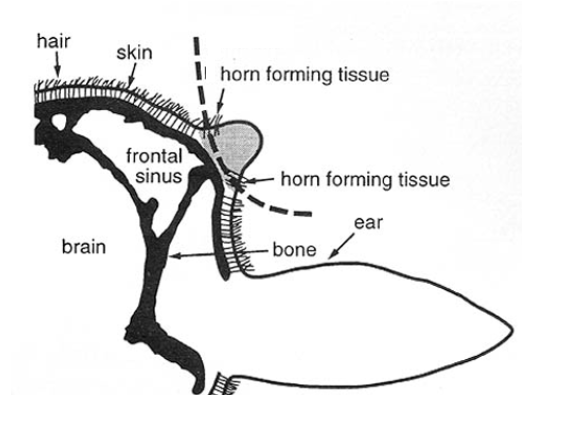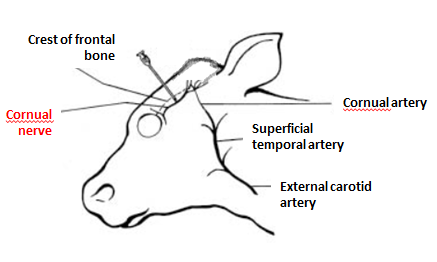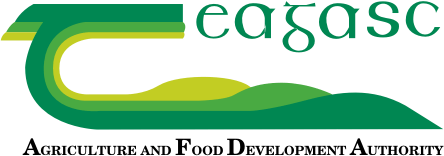Disbudding
Disbudding 02 March 2021 Type Factsheet Disbudding Factsheet By definition, disbudding is the removal of an area of skin including the horn bud in a young calf prior to solid attachment of the horn bud to the skull. Disbudding is performed for economic and practical reasons: to prevent bullying and injury to other animals (with […]
By Disbudding Factsheet
Disbudding
Type Factsheet
Disbudding Factsheet
By definition, disbudding is the removal of an area of skin including the horn bud in a young calf prior to solid attachment of the horn bud to the skull. Disbudding is performed for economic and practical reasons:
- to prevent bullying and injury to other animals (with implications for productivity and carcass damage respectively) and human safety during handling.
Cautery
Cautery is recommended by the European Food Safety Authority (EFSA) and other authority organisations, and is the only method of disbudding allowed in Ireland under S.I. 127 of 2014, which permits disbudding of calves up to 28 days old by thermal cauterisation. Local anaesthetic (LA) is required for disbudding on calves after two weeks of age.
Note: Caustic dehorning chemicals must not be used. They can spread into the eyes if the skin gets wet.
Young calf
The horn grows from the skin around its base – at different rates with different breeds (Figure 1). The horn bud is usually free-floating in the skin over the skull base in calves less than about two months old. As the calf gets older, this horn bud attaches to the skull bone and a small horn forms.
Older calf
After the horn bud attaches to the skull, the horn grows out from under the skin.
It becomes a bony extension of the skull with the hollow centre of the horn opening into the frontal sinus. The brain lies directly under the frontal sinus covered by a thin layer of bone. Dehorning after the horn attaches increases the risk of entering the frontal sinus and subsequent infection.
Animal handling
Animals need to be handled calmly and with care to prevent distress and injury to the animals and the handlers. A custom-built calf dehorning crate should be used to minimise stress to a calf and for optimum safety to the operator. A person disbudding calves must have the relevant knowledge, experience and skills, or be under the direct supervision of a person who has the relevant knowledge, experience and skills.
What is the best age to disbud calves at?
Where practical, calves should be disbudded while horn development is still at the horn bud stage, or at the first available handling opportunity beyond this age. This is because the procedure involves less tissue trauma when horn development is still at the horn bud stage, and there is no attachment of horn to the skull of the animal.

Figure 1. Horn bud development
What are the main methods used for disbudding of calves?
A cauterisation method (i.e. using a heated disbudding iron) is used to remove the horn buds.
The best location to anaesthetise is halfway between the base of the ear and the corner of the eye. Feel for a bony ridge in this area; the cornual nerve runs under that ridge (Figure 2). Insert a 5/8” needle up to its hub under the ridge and inject 2ml of the local anaesthetic (Adrenacaine).
Pull back while still injecting so that the last bit of local is injected just below the skin. Then repeat on the other side.
Successful disbudding
Because the horn grows from the skin around its base, you must remove or destroy a complete ring of hair (1cm wide) around the horn base. Check that the excised ring is wide enough because some horn will grow if the ring is not complete.
A 1cm wide ring of hair is enough – any more will make a larger wound, cause avoidable pain, and delay healing.
Checklist for hot-iron disbudding
- No matter if the cauterizing iron is heated by fire, propane, battery or AC current, the barrel must be larger than the horn bud so that a complete ring of tissue around the horn bud base is cauterized. Workers should wear gloves to protect their hands.
- If the calf is not sedated, then its head must be completely restrained by a halter or other device in head locks. Inadequate restraint results in excessive tissue damage and increased processing time. The calf’s ear should be held out of the way.
- Preheat the cauterizing iron to a dull red colour. The iron should be hot enough to produce an even and complete circle when applied to a piece of wood for 2-3 seconds.
- Place the hot iron over the horn, hold it with firm pressure. After the hair starts burning, rotate the iron around the bud to evenly distribute the heat.
- Continue the application until a copper-coloured ring of cauterized tissue encircles the bud, but no longer than about 10-20 seconds. Excessively long application may allow enough heat to be transferred through the skull to damage the brain.
- Inspect the calves after 30 minutes and cauterize any arteries that are still bleeding. Left alone the horn bud should fall off within 4 to 6 weeks.
Disbudding aftercare
Inspect the calves regularly, preferably daily, for about 10 days after dehorning for early detection of infection or fly strike. The symptoms usually seen are constant tossing of the head and/or a discharge from the wound. Consult with your veterinarian if wounds get infected. More severe cases may require administration of antibiotics.
Tetanus
Calves that are disbudded are susceptible to tetanus, and ideally should have immunity before the procedures are carried out. As the time taken for any immunity to develop may be less than the time taken for the tetanus organism to begin toxin production, initial vaccination only at the time of disbudding may do little to prevent tetanus resulting from these procedures. Tetanus vaccination is usually given with the other Clostridial vaccines (tetanus is one of the 10-in-1 combination vaccine). Good immunity is achieved by two injections at least four weeks apart.
A single vaccination without a booster may not produce any worthwhile long-term immunity. In high tetanus risk situations (or operating on farms with a history of tetanus cases), the most effective options are:
- Give the pregnant cows an annual tetanus booster (usually as 10-in-1 vaccine) in the last trimester of pregnancy to ensure maximum protection is passed onto the calf in the colostrum.
Or
- Give calves an injection of tetanus antitoxin at the time of dehorning. This will provide immediate protection against tetanus, but it is more expensive.

Figure 2. Injection site overlying the cornual nerve
